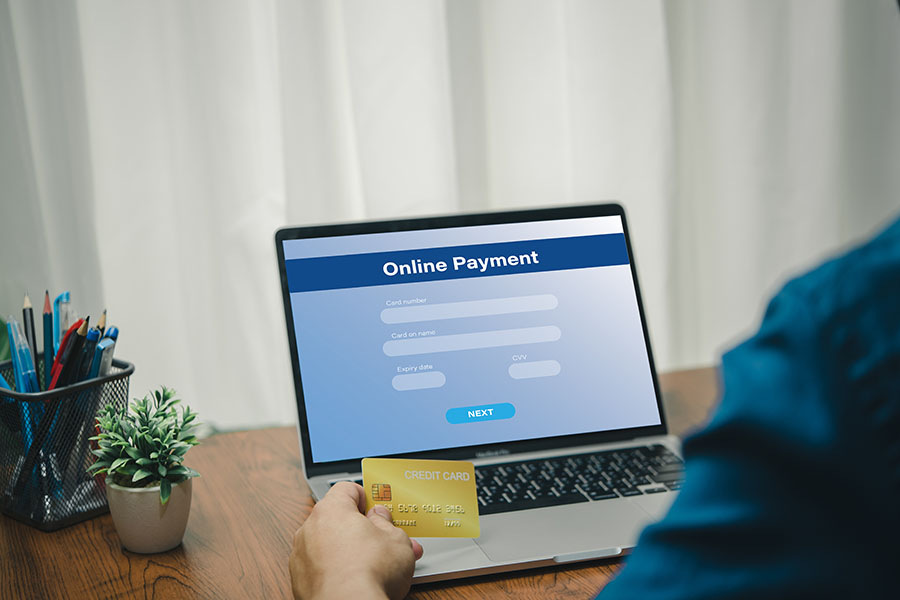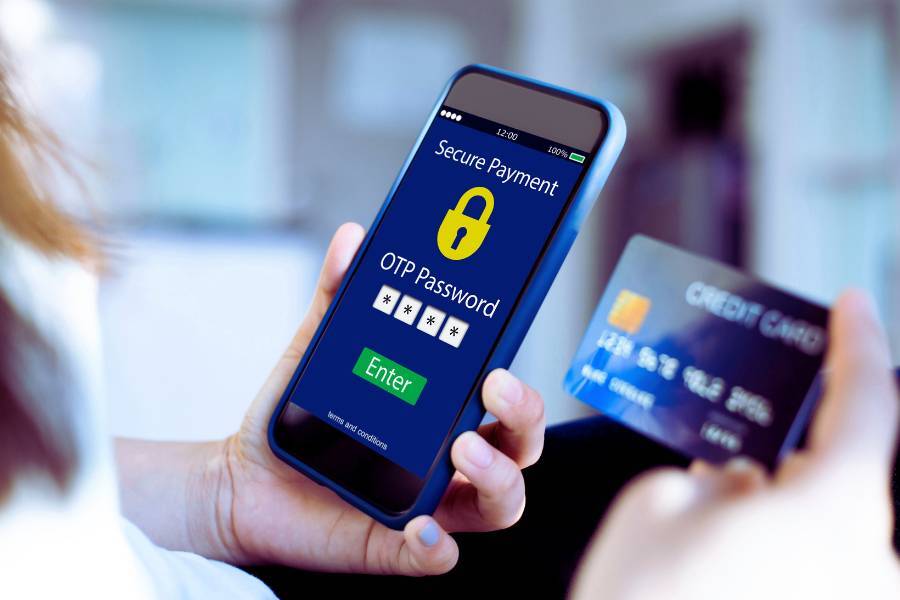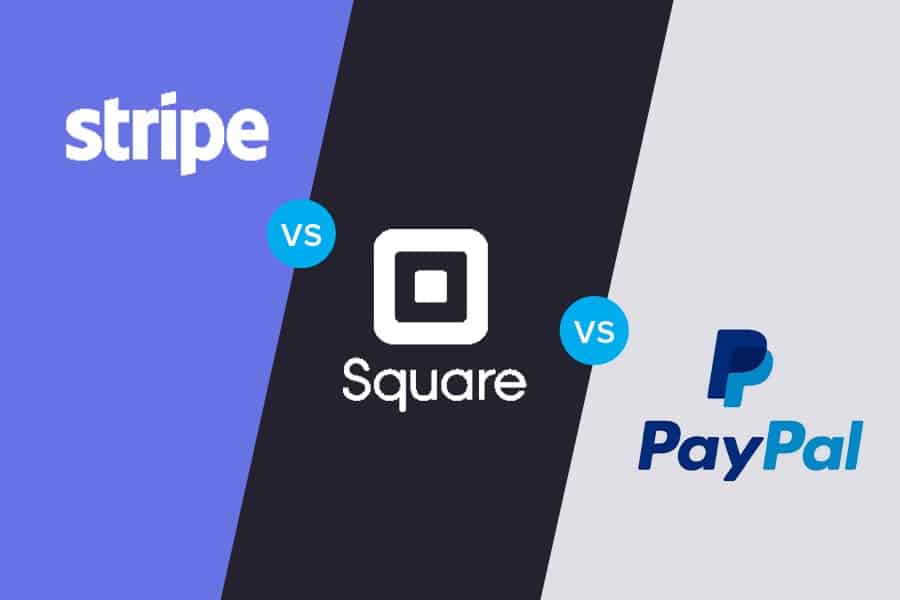
To securely accept online payments from your customers, you need a payment solution for ecommerce that ensures smooth and safe transactions. Ecommerce payment processors facilitate online transactions by securely transmitting payment information between the customer, the merchant (you/your store), and financial institutions.
When choosing an ecommerce payment processor, consider factors such as fees, integration capabilities, security, and customer support. It’s also important to stay updated on trends and statistics on seamless, secure, and fast payment processing options.
Ecommerce payment processing is the system that allows online businesses to accept and manage payments from customers over the Internet. This process involves several key steps and components that work together to ensure transactions are completed securely and efficiently.
- Payment gateway: The payment gateway acts as the intermediary between the ecommerce website and the financial institutions. It encrypts and transmits payment data securely from the customer to the payment processor.
- Payment processor: The payment processor is the company responsible for handling the transaction details, including authorization and settlement. It communicates with the customer’s bank (issuing bank) and the merchant’s bank (acquiring bank) to approve or decline the transaction.
- Merchant account: A merchant account is a type of bank account that allows businesses to accept payments. Funds from transactions are first deposited into this account before being transferred to the business’s main bank account.
- Issuing bank: This is the bank that issued the customer’s credit or debit card. It verifies the transaction details and either approves or declines the payment based on the customer’s account status.
- Acquiring bank: The acquiring bank works with the payment processor to receive and process the transaction details from the merchant. It ultimately deposits the funds into the merchant’s account after deducting any applicable fees.
How It Works
The ecommerce payment processing workflow can be broken down into several steps:
Step 1: Checkout & Payment
The customer proceeds with purchasing products or services on the ecommerce website by going to the checkout page. The customer enters payment details such as credit or debit card information into the secure payment form on the website.
Step 2: Authorization Request
The payment gateway encrypts the payment data and sends it to the payment processor, which then forwards the authorization request to the issuing bank.
Step 3: Bank Approval
The issuing bank checks the customer’s account for sufficient funds and potential fraud. If everything checks out, the bank approves the transaction and sends an authorization code back to the payment processor.
Step 4: Transaction Confirmation
The payment processor forwards the authorization code to the payment gateway, which then confirms the transaction on the ecommerce website. The customer receives a confirmation message, and the purchase is complete.
Step 5: Fund Transfer
The payment processor facilitates the transfer of funds from the issuing bank to the acquiring bank, which deposits the money into the merchant account, minus any processing fees.
The whole process above usually takes only a few seconds or minutes to complete.
What to Look for in an Ecommerce Payment Processor
Selecting the right ecommerce payment solution is crucial for the success of your online business. A suitable payment processor ensures smooth transactions, enhances customer experience, and employs stringent security measures to safeguard against fraud.
Here are some key factors to consider when choosing the best ecommerce payment processor for your business.
Fees & Costs
Payment processors charge various fees, which can significantly impact your bottom line, so it’s essential to understand the fee structures of different processors. These are some fees to watch out for:
- Transaction fees: Charges per transaction, usually a percentage of the sale plus a fixed fee.
- Monthly fees: Regular charges for maintaining the payment processing service.
- Setup fees: One-time costs for setting up the payment processing system.
- Chargeback fees: Costs incurred if a customer disputes a charge and requests a refund.
- Additional fees: Any other costs, such as for currency conversion or additional features.
Compare different processors to find one with a fee structure that fits your budget and transaction volume.
Integration Capabilities
Ensure the payment processor can seamlessly integrate with your existing ecommerce platform, as this will save time and resources. Consider the following:
- Compatibility: Check if the processor supports popular ecommerce platforms like Shopify, WooCommerce, Magento, etc.
- Ease of integration: Look for processors that offer plugins, APIs, and detailed documentation for smooth integration.
- Developer support: Access to robust technical support and resources can ease the integration process and address any issues quickly.
Security Measures
Security is paramount in payment processing, and choosing a processor with strong security measures is essential to protect your customers’ data. Ensure your chosen processor adheres to the highest security standards to protect your customers’ data:
- PCI DSS compliance: Verify that the processor complies with the Payment Card Industry Data Security Standard (PCI DSS), which sets requirements for securely handling card information.
- Data encryption: Ensure the processor uses strong encryption to protect payment data during transmission.
- Fraud prevention tools: Look for features like tokenization, 3D Secure, and real-time fraud detection to minimize the risk of fraudulent transactions.
Customer Support
Reliable customer support is essential for resolving issues promptly and minimizing downtime, which can otherwise negatively impact your business. Reliable customer support is essential for resolving issues promptly and minimizing downtime:
- Availability: Ensure the processor offers 24/7 customer support, especially if you have customers in different time zones.
- Channels: Look for multiple support channels such as phone, email, live chat, and comprehensive online resources like FAQs and documentation.
- Reputation: Check reviews and testimonials to gauge the quality of customer support provided by the processor.
Payment Methods & Global Reach
Offering a variety of payment options can enhance the customer experience and increase sales, making it an important factor to consider. Ensure the processor supports major credit and debit cards, digital wallets (e.g., PayPal, Apple Pay, Google Wallet), and alternative payment methods like bank transfers or buy now, pay later (BNPL) options.
If you sell globally, choose a processor that supports multiple currencies and offers localized payment methods to cater to international customers.
Reporting & Analytics
Access to detailed reporting and analytics can help you manage and optimize your payment processes, providing valuable insights into your business operations. Look for processors that offer comprehensive reports tailored to your specific needs.
- Transaction reports: Look for processors that provide comprehensive transaction histories, including sales, refunds, and chargebacks.
- Performance metrics: Features that track metrics like conversion rates, average transaction values, and payment success rates can offer valuable insights.
- Customizable reports: The ability to generate custom reports tailored to your specific needs can aid in business planning and decision-making.
Scalability & Flexibility
As your business grows, your payment processing needs may change, so selecting a processor that can scale with you is vital. Consider:
- Scalability: Choose a processor that can handle increased transaction volumes and expand along with your business.
- Flexibility: Look for processors that offer customizable solutions to fit your unique business requirements.
Top Ecommerce Payment Solutions
Choosing the right payment solution is crucial for ensuring smooth and secure transactions on your ecommerce platform. Here are some of the top ecommerce payment processing services that cater to various business needs, providing a mix of robust features, ease of use, and reliable customer support:
Ecommerce Payment Processing Trends & Statistics
Online payment processing is evolving with consumer preferences and security concerns. Payment flexibility, protection against fraud, and cross-border expansion are some key trends shaping the landscape in 2024.
Rise of Mobile Payments
Mobile payments, which are payments completed with a mobile device, are rapidly gaining popularity as consumers increasingly use smartphones and tablets for shopping. Solutions like Apple Pay, Google Wallet, and Samsung Pay are becoming mainstream, offering convenience and security.
The global mobile ecommerce market was $2.2 trillion in 2023, which is 60% of all ecommerce sales worldwide. This is expected to grow to $3.4 trillion, 62% of the global ecommerce market, by 2027.
With the growth in mobile payments, ecommerce businesses will benefit from offering these as a payment option for their shoppers. Choosing a payment processor that provides good mobile payment support will help attract and retain customers who prefer the convenience of mobile transactions.
Growth of Digital Wallets
Digital wallets such as PayPal, Apple Pay, Venmo, and Alipay are seeing widespread adoption due to their ease of use and enhanced security features. These wallets allow consumers to store multiple payment methods and make quick, one-click purchases.
It has also become the most common payment method used for ecommerce transactions and accounted for 50% of ecommerce transactions in 2023.
Increasing Importance of Security
With the rise in online transactions, the importance of payment security has never been greater. Consumers demand secure payment options, and businesses must comply with stringent security standards to protect sensitive information.
Globally, ecommerce losses to payment fraud totaled $41 billion in 2023, and 48% of consumers cited website security as a top reason for cart abandonment.
Adoption of Buy Now, Pay Later Services
Buy now, pay later (BNPL) services like Klarna, Afterpay, and Affirm are becoming popular among consumers, offering flexible payment options without the need for credit cards. These services can boost sales by making higher-priced items more accessible.
There were 360 million BNPL users in 2022, which is expected to grow to more than 900 million by 2027.
Cross-border Ecommerce Growth
Cross-border ecommerce is expanding as more consumers shop from international retailers. Businesses must accommodate multiple currencies and localized payment methods to attract global customers.
The cross-border payments market is projected to grow from $176.5 billion in 2021 to $238.8 billion in 2027.
Frequently Asked Questions (FAQs)
Click through the sections below to read answers to common questions about ecommerce payment processing:
In ecommerce, payment processing involves securely transmitting payment details between the customer, merchant, and financial institutions. The payment processor authorizes the transaction and transfers funds from the customer’s account to the merchant’s account.
The best payment processor for ecommerce is one that offers low fees, robust security features, easy integration with your ecommerce platform, and excellent customer support. The ideal choice depends on your specific business needs and technical capabilities.
Ecommerce businesses may use various payment methods to facilitate transactions. The most common methods include credit and debit cards, digital wallets like PayPal, Apple Pay, and Google Wallet, bank transfers, Buy Now, Pay Later (BNPL) services such as Afterpay and Klarna, and cryptocurrency.
Bottom Line
Ecommerce payment processing is crucial for the success and security of online businesses. Selecting a payment processor that aligns with your business needs can ensure smooth and secure transactions for your customers. Staying updated on the latest trends helps keep your business competitive and responsive to consumer preferences.
Ultimately, the best ecommerce payment systems can enhance the customer experience, protect against fraud, and support the growth of your ecommerce business.





